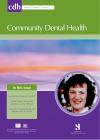Community Dental Health

- Cover Date:
- June 2012
- Print ISSN:
- 0265 539X
- Vol:
- 29
- Issue:
- 2
When Can Oral Health Education Begin? Relative effectiveness of three oral health education strategies starting pre-partum
Objective: To test the impact of oral health education provided to pregnant mothers on subsequent practices within the infant’s family. Research design: A quasi-experimental intervention trial comparing the effectiveness of ‘usual care’ to one, or both, of two oral health education resources: a ‘sample bag’ of information and oral health care products; and/or a nine-minute “Healthy Teeth for Life†video on postnatal oral health issues. Participants: Women attending the midwife clinic at approximately 30 weeks gestation were recruited (n=611) in a public hospital providing free maternity services. Results and Conclusions: Four months after the birth of their infant, relative to the usual care condition, each of the oral health education interventions had independent or combined positive impacts on mother’s knowledge of oral health practices. However young, single, health care card-holder or unemployed mothers were less likely to apply healthy behaviours or to improve knowledge of healthy choices, as a result of these interventions. The video intervention provided the strongest and most consistent positive impact on mothers’ general and infant oral health knowledge. While mothers indicated that the later stage of pregnancy was a good time to receive oral health education, many suggested that this should also be provided after birth at a time when teeth were a priority issue, such as when “baby teeth†start to erupt.
Key words: health education, dental caries, child welfare, prevention, ante-natal, dental health knowledge attitudes and practice
- Article Price
- £15.00
- Institution Article Price
- £
- Page Start
- 161
- Page End
- 167
- Authors
- H. Clifford, N.W. Johnson, C. Brown, D. Battistutta
Articles from this issue
- Title
- Pg. Start
- Pg. End
- Dental Public Health in Action - The Platform for Better Oral Health in Europe Report of a New Initiative
- 131
- 133
- Effect of national recommendations on the sale of sweet products in the upper level of Finnish comprehensive schools
- 149
- 153
- A review of strategies to stimulate dental professionals to integrate smoking cessation interventions into primary care
- 154
- 161
- When Can Oral Health Education Begin? Relative effectiveness of three oral health education strategies starting pre-partum
- 161
- 167
- Clinical evaluation of three caries removal approaches in primary teeth: A randomised controlled trial
- 173
- 178
- Relationship between gingivitis severity, caries experience and orthodontic anomalies in 13-15 year-old adolescents in Brno, Czech Republic
- 179
- 183
- Prevalence of necrotizing ulcerative gingivitis and associated factors in Koranic boarding schools in Senegal
- 184
- 187
